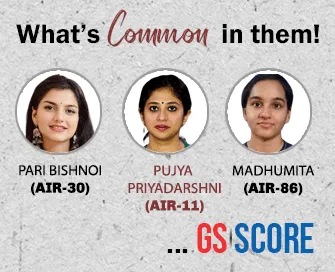

9th June 2025 (9 Topics)
Context
The Union Ministry of Home Affairs has announced that the next Census of India will be conducted in two phases, with March 1, 2027 as the reference date. This Census holds exceptional significance due to its potential linkage with caste enumeration, delimitation, and women’s reservation.
Understanding the Structure, History, and Implications of Census 2027
- Historical Evolution of Census in India
- Ancient Records: References to population counts exist in Kautilya’s Arthashastra and Ain-i-Akbari (during Akbar’s reign).
- Modern Census: Initiated in 1881 under British rule, with C. Plowden as the first Census Commissioner.
- Synchronous Census: India has continued with the decennial synchronous census model post-Independence, collecting uniform data nationwide.
- Caste Enumeration History: The last full caste enumeration was conducted in 1931 (for Hindus).
- Legal and Administrative Framework
- Constitutional Status: Census is listed under Union List Entry 69 in the Seventh Schedule.
- Legislation: Governed by the Census Act, 1948.
- Functionaries: Conducted by the Registrar General and Census Commissioner of India; field operations managed by state-appointed officers, with manpower primarily drawn from the teaching community.
- Census Process: Methodology and Phases
- Phase I – House Listing Operations:
- Collects data on households: drinking water, sanitation, fuel use, availability of kitchen, TV, phone, vehicle ownership, etc.
- Last conducted in 2010 with 35 questions.
- Phase II – Population Enumeration:
- Includes: Name, age, gender, religion, caste (SC/ST), literacy, mother tongue, occupation, etc.
- Usually held in February, with March 1 as the reference date.
- Output:
- Provisional figures released within weeks; final detailed reports take up to two years.
- Significance of Census 2027
- Caste Enumeration for All Hindus:
- First time since 1931 that detailed caste data for all Hindus may be captured.
- Fulfils long-standing demands of civil society and political parties.
- Basis for Delimitation (Post-2026 Freeze Lifted):
- Article 82 mandates reallocation of Lok Sabha seats post-2026 using census data.
- Risk of political marginalisation for southern and smaller northern states.
- Women’s Reservation Implementation:
- Women’s Reservation Act (106th Constitutional Amendment Act, 2023) mandates 1/3rd reservation in Lok Sabha and State Assemblies.
- 2027 Census data to be used for operationalising this from 2029 general elections.
- Challenges and Criticism
- Postponement: Originally due in 2021 but delayed due to COVID-19 and now due to administrative complexity of caste enumeration.
- Delimitation Fears: Southern and NE states fear loss of political representation due to population-based seat reallocation.
- Data Accuracy & Confidentiality: Need for robust digital infrastructure and data protection mechanisms for caste-related data.
- Resource & Capacity Issues: Concerns over staff training, especially in areas with low digital literacy and logistical difficulties.
- Way Forward
- Phased Implementation & Consensus Building:
- Avoid rushing delimitation exercise before the 2029 elections.
- Build inter-state consensus on seat allocation to avoid political fallout.
- Transparent and Scientific Caste Enumeration:
- Must be carried out with clear guidelines, training, and IT-based tools to avoid inaccuracies.
- Institutional Reforms:
- Strengthen Registrar General's Office with digital capabilities.
- Enact a new Data Protection Law to handle sensitive caste-related data.
- Public Awareness:
- Campaigns to ensure public cooperation and address misinformation related to caste data.
More Articles



